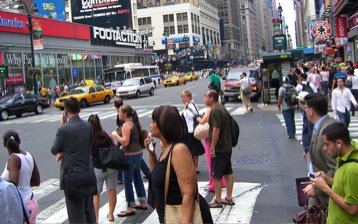Storm’s brewing. For connoisseurs of the National Weather Service’s Monterey, California, area forecast discussion, today’s early-morning report tends towards “War and Peace” in terms of length, though in all capital letters and without quite the mastery of dramatic language one loves in a good non-Harlequin novel. An excerpt:
“AS INTENSE FRONTAL CONVERGENCE APPROACHES…INCREASING PRECIPITABLE WATER PLUME SWINGS UNDERNEATH. THIS WILL SET THE STAGE FOR PERIODS OF VERY HEAVY RAIN WITH RAIN RATES PROBABLY NEARING 0.75”. TRICKY PART OF FORECAST IS HOW FAR EAST THIS BAND GETS BEFORE IT BECOMES QUASI-STATIONARY FOR AN EXTENDED PERIOD. WHERE THIS BOUNDARY ALIGNS ITSELF WILL MARK THE LOCATIONS WHERE HEAVY … FLOODING RAINS WILL PERSIST FOR AT LEAST 12 HOURS. ECMWF/GFS HAVE BEEN REMARKABLY SIMILAR IN TARGETING SANTA CRUZ MOUNTAINS SOUTHWARD TO BIG SUR FROM ABOUT 18Z FRI THRU 06Z SAT. IF THIS WAS TO OCCUR…WE WOULD SEE AT A MINIMUM SERIOUS URBAN AND SMALL STREAM FLOODING AND AT WORST FLASH FLOODING. SLIGHT CHANGE HAS BEEN NOTED ON 06Z GFS…AS IT LIMITS THE INLAND INTRUSION OF THIS INITIAL
CONVERGENCE BAND AND ALIGNS IT PERILOUSLY CLOSE TO SHORE … THEN LIFTS IT NORTH DROPPING A LARGER MAJORITY OF THE RAIN IN THE OCEAN. CERTAINLY NOT CONFIDENT ENOUGH BASED ON ONE MODEL RUN … BUT THIS INDICATES HOW DANGEROUSLY CLOSE THIS SITUATION CAN EVOLVE FROM SERIOUS FLOODING TO A LESSER THREAT.”
In layperson’s terms, what the forecaster is describing is a storm that the weather models can’t quite decide will sit right over the coast, which would cause flooding, or linger offshore, and dump into the ocean. The very good CBS/Channel 5 radar has a good picture of how things look now: There is lots of rain happening, but mostly just off the coast; unlike many storms here, the rain is moving from south to north instead of west to east (a result of the storm center being well off the coast and the Bay Area being on the “right” side of ; the place that’s experiencing the heaviest soaking so far is north of the Golden Gate, on Point Reyes, not far to the south as described in the discussion. I’m hoping we’ll dodge the worst of this.
[Update/Saturday night: We did get a good long soaking all through the Bay Area from midmorning Friday until nearly midnight. Around here and in San Francisco, where I was working, lots of water running in the gutters and sometimes ponding on the streets and freeways. A little more excitement to the north of here in Marin County, where creeks rose very quickly and threatened to flood out some of the tonier suburban downtowns; nothing came of that threat, though, aside from some streamside gawkers and excited newscasters. Stopped raining late, and then we had an unexpectedly beautiful, warm day today; a long bike ride involving the randonneuring freaks got a miraculous break in the weather, too — instead of 125 miles in a windy downpour, the riders, however many there were, got the mildest, friendliest conditions for a January brevet in several years. And then tonight, after the ride was done, it started raining again.]
Technorati Tags: berkeley weather, weather

